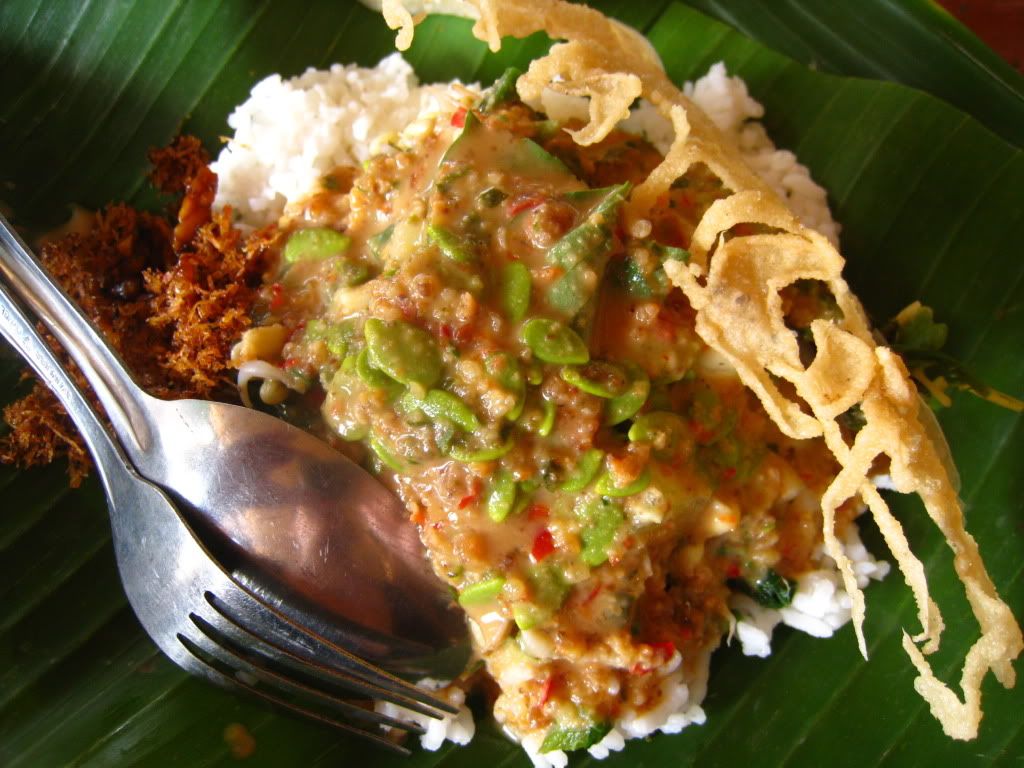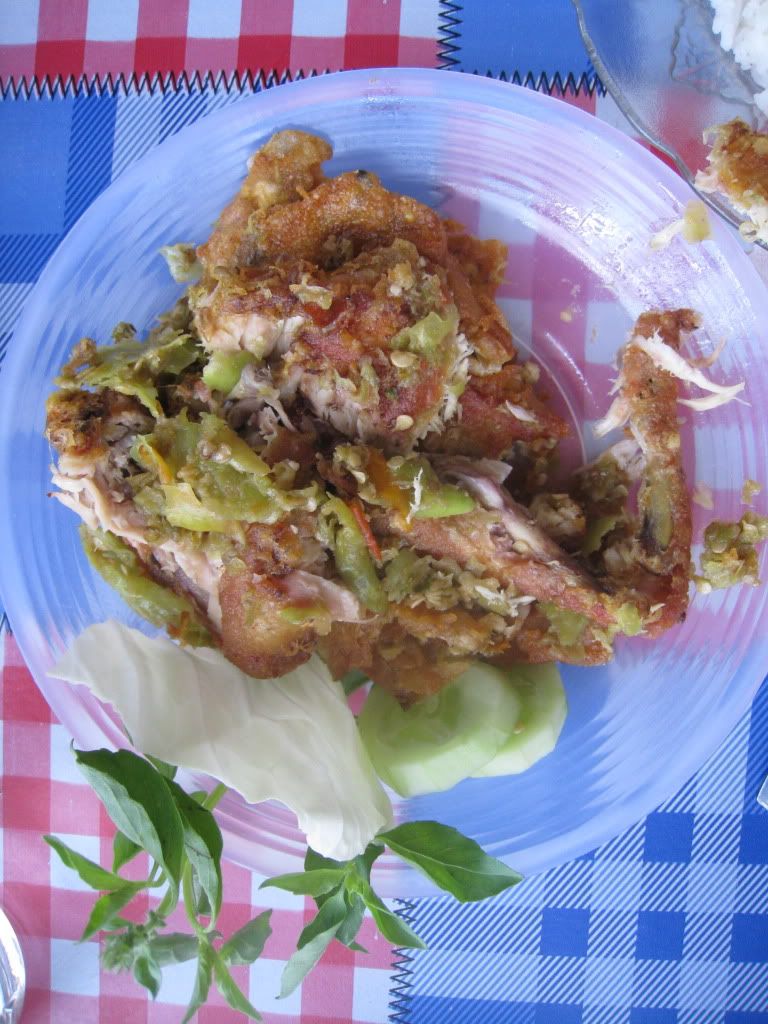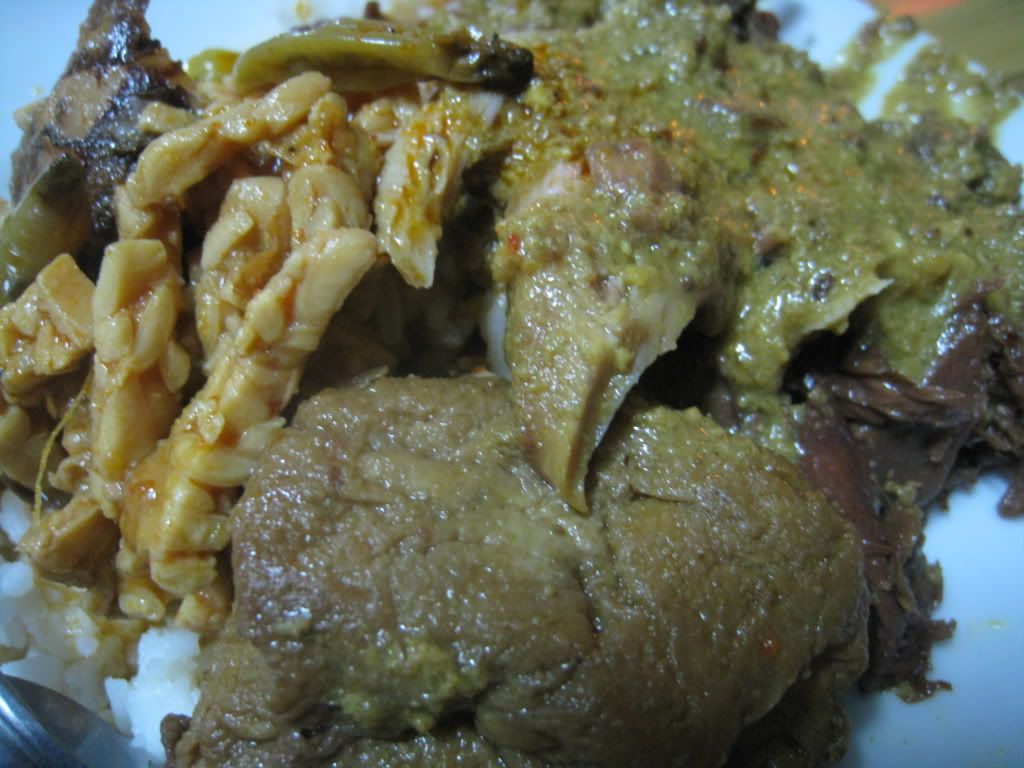 Yogyakarta is a hot spot in Java for foodies. Any traveler you come across will say, "There is great food in Yogyakarta." It is a cultural center in Java close to the ocean and has several historic sites as well as surrounding nature to enjoy, such as climbing the steep slopes of Mt. Merapi. As the city is so big, it attracts people from all over, contributing to the growing diversity of flavors in the city. The cuisine in Yogyakarta is characterized by a sweetness, similar to the characteristic flavor of Shanghai (also sweetness). Being in Indonesia, you can still get the fiery chili taste with any local dish. Just ask for it (or the omittance thereof).
Yogyakarta is a hot spot in Java for foodies. Any traveler you come across will say, "There is great food in Yogyakarta." It is a cultural center in Java close to the ocean and has several historic sites as well as surrounding nature to enjoy, such as climbing the steep slopes of Mt. Merapi. As the city is so big, it attracts people from all over, contributing to the growing diversity of flavors in the city. The cuisine in Yogyakarta is characterized by a sweetness, similar to the characteristic flavor of Shanghai (also sweetness). Being in Indonesia, you can still get the fiery chili taste with any local dish. Just ask for it (or the omittance thereof).Going for something on the healthy side, attempting to stray away from all that is fried (a difficult task), I was taken Warung Pecel Madiun for nasi pecel madiun. In English, I was told it is a "traditional Indonesian salad." It is not exactly salad in the traditional sense being served atop a serving of rice, but it was not considered a hot dish. Pecel is actually a classic Javanese peanut sauce commonly served with vegetables. It was poured atop raw spinach, sprouts, beans, a type of cucumber, and other leaves. On the side was a type of tempe cracker and salt-preserved, shredded meat. The nasi pecel madiun tasted very fresh and the selection of ingredients showcased this. The peanuts gave whole salad a more meaty taste. The pecel sauce also brought some spiciness to the salad, making it more exciting. It was difficult to get the perfect bite in with pecel, vegetable, rice, cracker, and that salted meat on one spoon. The meal as a whole is not heavy at all, even with all the rice. Needless to say, I felt a lot healthier after several meals that centered on something that was fried.
 My companion was eager to show me how hot Indonesian food can get, claiming to only eat ayam penyet pedas once a month because it can wreak havoc on the digestive system. Here is to hoping I am not reminded of the meal the following day from something other than memory. Warung Sambal is another simple restaurant in the Yogyakarta area of Sleman. I was told initially that the famous dish is "chicken cooked with hot spices" and not "fried smashed chicken" as the translation implies. However, I was not expecting this. It was a thigh and leg piece of fried chicken, bone in, of course, first boiled with a spice mixture, coconut milk, and lemongrass before it is fried, ensuring that the chicken remains tender. Dark meat is appreciated for its flavor, enhanced further if the bone is in. Asians are more concerned with flavor - not health factor - preferring dark meat over white meat. I did not get the impression that the chicken was cooked with hot spices, but rather a paste dominated by green chili was spread over the fried chicken. Ayam penyet pedas is, indeed, incredibly spicy. You can make it even spicier by asking for sambal. Only the cucumber the chicken came with is able to save the mouth from spontaneously combusting due to the concentration of chili. The rice is only a small way to falsely dilute the scoville level from the chicken. It was really flavorful, though. My innards were screaming from the concentrated bites of heat that it was not used to.
My companion was eager to show me how hot Indonesian food can get, claiming to only eat ayam penyet pedas once a month because it can wreak havoc on the digestive system. Here is to hoping I am not reminded of the meal the following day from something other than memory. Warung Sambal is another simple restaurant in the Yogyakarta area of Sleman. I was told initially that the famous dish is "chicken cooked with hot spices" and not "fried smashed chicken" as the translation implies. However, I was not expecting this. It was a thigh and leg piece of fried chicken, bone in, of course, first boiled with a spice mixture, coconut milk, and lemongrass before it is fried, ensuring that the chicken remains tender. Dark meat is appreciated for its flavor, enhanced further if the bone is in. Asians are more concerned with flavor - not health factor - preferring dark meat over white meat. I did not get the impression that the chicken was cooked with hot spices, but rather a paste dominated by green chili was spread over the fried chicken. Ayam penyet pedas is, indeed, incredibly spicy. You can make it even spicier by asking for sambal. Only the cucumber the chicken came with is able to save the mouth from spontaneously combusting due to the concentration of chili. The rice is only a small way to falsely dilute the scoville level from the chicken. It was really flavorful, though. My innards were screaming from the concentrated bites of heat that it was not used to.

Yogyakarta is most famous for gudeg, a curry made with young jackfruit and coconut milk with chicken. The sugars of the jackfruit give the gudeg its very sweet characteristic. We tried it at a roadside restaurant called Warung Kayu, popular for late-night eating. It is a simple wooden structure with all the food laid out in the middle and an old woman scooping up gudeg and ripping chicken bits onto your plate with her bare hands (slightly horrifying for the germaphobes out there). Whatever. You are in Indonesia, so this is something you have to get over. There goes the rice, the gudeg, slices of tempe, egg, and a big piece of chicken. Looking at the gudeg, it appears to be brown slop after taking in color from teak leaves, but do not let that deter you. It goes down nicely with the sweetened ice tea, which can be asked for unsweetened. The gudeg was really tasty and not as sweet as I originally imagined, most likely because the jackfruit was not completely ripe at its height of sweeetness. The combination of spices used in cooking while the coconut milk boiled down to almost nothing gave the gudeg extra depth appealing to other taste palates. The chicken was also very tender and moist taking in the flavor of the curry. After a taste, you understand why gudeg is very much associated with its mother city of Yogyakarta.
Waroeng Pecel Madiun. Moh. Kahfi II No. 40 A, Jakarta Selatan, DKI Jakarta, Indonesia.
No comments:
Post a Comment